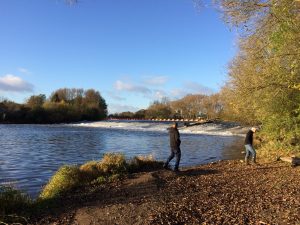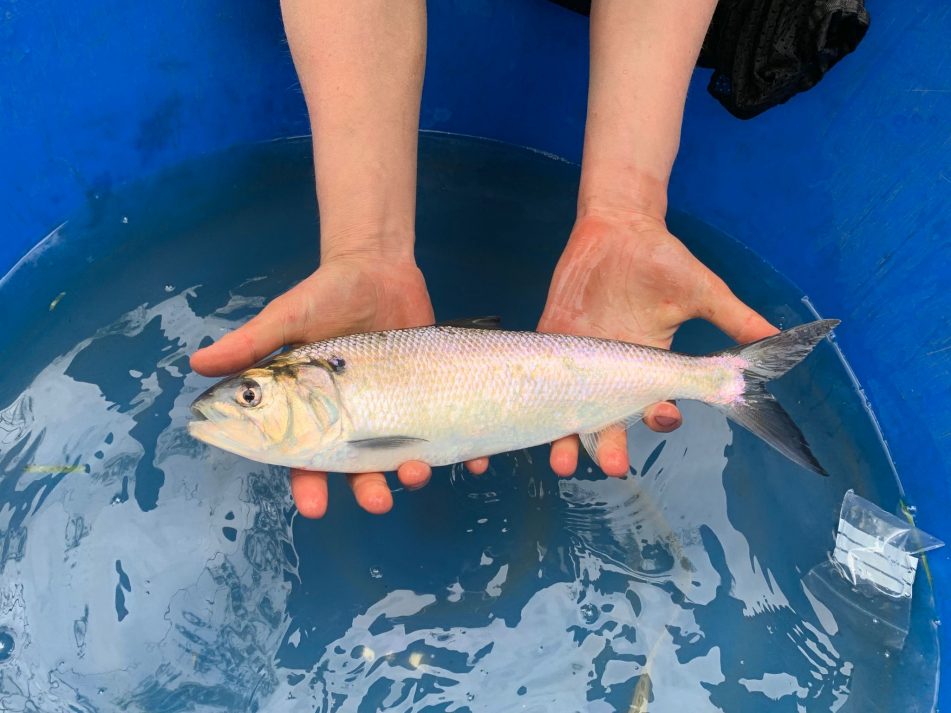
We’re giving you a close look into one of the scientific techniques used to monitor the twaite shad migration. The data we get from tagging shows us the where and when specific shad pass different receivers at locations up and down the river.
2022’s first week of tagging. Week commencing 3rd May 2022.
It’s been a successful week for our scientists. A total of 109 twaite shad were tagged in 3 days, with a record of 58 shad tagged yesterday (Thursday 5th May)! We’ve put this photo series together to give you a bit more insight into the scientific monitoring down at Upper Lode Weir in Tewkesbury.
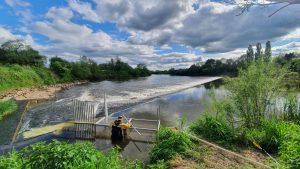
The trap is positioned above the notch in the weir at Upper Lode. The shad swim over the notch in the weir, into the structure and scientists close the door to keep them briefly contained.
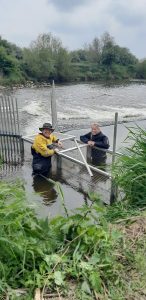
Emma and Laura in position, waiting for the shad!
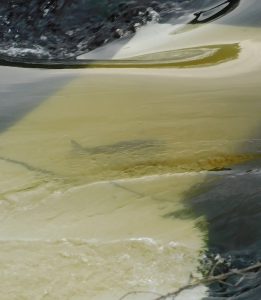
A shad swims over the white boards. These help us spot the fish as they pass over the notch. Photo credit: John de Wet.
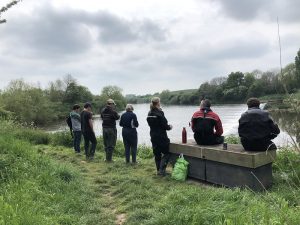
How many scientists and volunteers does it take to spot a shad?! Some of the team stand on the bank of the river ready to let the scientists operating the trap know if there is a shad swimming over the white boards. The view is better from above!
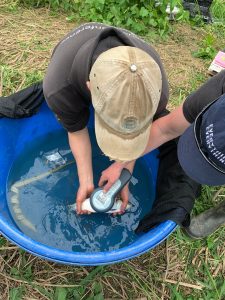
Once we have a shad, it is scanned to check whether it has been tagged in previous years.

Our first twaite shad of 2022 ready to be tagged!
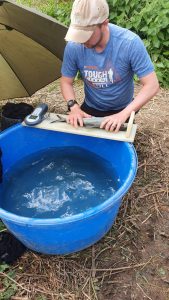
The length of the shad is recorded. The measurement is taken from the tip of the head to the centre of the forked tail. The shad is also weighed.
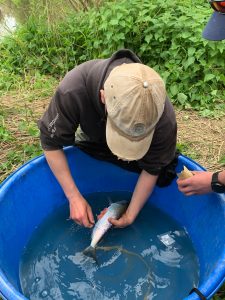
Scale samples are very carefully extracted. This enables us to age the fish.
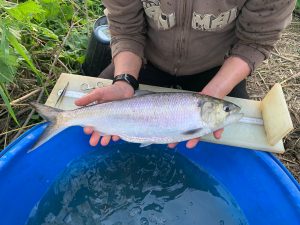
The biggest shad tagged this week. 45 cm and 1.6 kg.
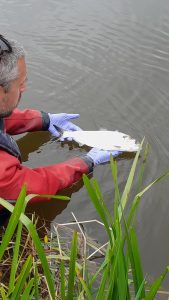
10. Once fitted with an acoustic tag and/or PIT tag. The shad is released back into the River Severn, unharmed and ready to continue its migratory journey upstream. This whole process from capture to release takes mere minutes, and the scientists are very careful to handle the fish correctly. Find out more about the different types of tags HERE.
For more detail about all Unlocking the Severn’s scientific monitoring, CLICK HERE.
Visit our Instagram page for more updates on the science behind the shad run. Click on our ‘Science’ Story Highlight.


